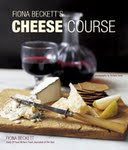 OK, now you can't face another mouthful of roast turkey in any guise it's time to get cracking on creating the Ultimate Macaroni Cheese as announced in my post of December 17th.
OK, now you can't face another mouthful of roast turkey in any guise it's time to get cracking on creating the Ultimate Macaroni Cheese as announced in my post of December 17th.To recap you can enter any of the following 4 categories (I've just added an extra one) though not the same entry in each category
* Best original recipe - meaning original as in invented by you rather than wacky/off the wall. We’re not particularly looking for recipes that include fish sauce though I wouldn’t rule them out.
* Most mouthwatering mac’n’cheese pic
That gives you scope to make someone else’s macaroni cheese (Simon Hopkinson’s seems to be a strong contender so far) and create a drop-dead gorgeous photo - or series of photos - of it
* Best use of artisanal cheese
Let’s celebrate the fact we have some of the best cheeses in the world in the UK by challenging you to use them in your macaroni cheese. A good category to enter if you like your mac'n'cheese plain and unadorned
* Best drink match
This was suggested by Denise Medrano aka The Wine Sleuth for mac'n'cheese loving winos - or beer or cider lovers. Don't feel you have to limit yourself to wine. What's the perfect way to wash down your macaroni cheese?
The judges will be Denise for this last category, cookery writer Xanthe Clay of the Daily Telegraph who will judge the recipe category, food photographer Marie-Louise Avery who will decide who has submitted the best pic or series of pix and Jess Trethowan of Trethowan's Dairy (makers of Gorwydd Caerphilly) who will judge the best use of artisanal cheese. (I've also recruited food writer Marlena Spieler who reminds me she has written a whole book on Macaroni cheese.) There will be a prize for each winner which I'll announce shortly once I've done a bit more arm-twisting.
Post your recipe/photo/drink match on your blog with a link to this post - letting me know, obviously, that you've done so - or send it to me at fibeckett AT live DOT com (see contact details on the blog). The closing date is January 18th. (NOW EXTENDED TO 11.59PM ON THE 24TH as there are a lot of entries in the pipeline that haven't made it through!)
Good luck!












































